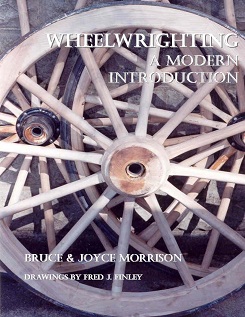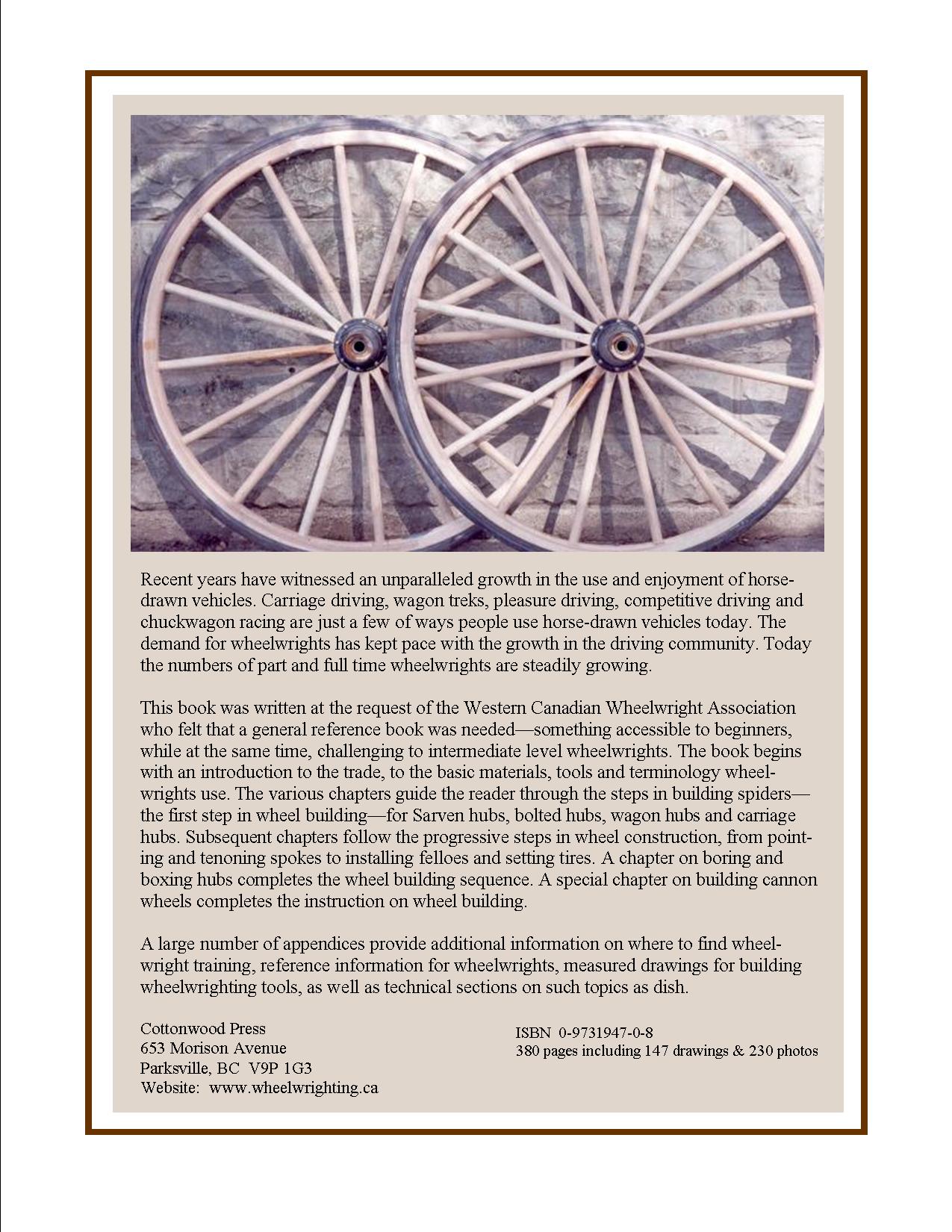This general reference book is accessible to beginners while at the same time challenging to intermediate level wheelwrights. Lots of information—the chapters guide the reader through the steps in building spiders—the first step in wheel building—for Sarven hubs, bolted hubs, wagon hubs and carriage hubs. Subsequent chapters follow the progressive steps in wheel construction, from pointing and tenoning spokes to installing felloes and setting tires. There is a chapter on boring and boxing hubs to complete the wheel building sequence. A large number of appendices provide additional information on where to find wheelwright training, reference information for wheelwrights, measured drawings for building wheelwrighting tools, as well as technical sections on such topics as dish. Carriage wheels, carriage hubs, wagon wheels, general Wheelwrighting and Wheelwright training – this book has it covered.
Here are some of the topics:
– Building and repairing a Sarven Wheel
– Building Common Hubs
– Putting on Felloes (Rims) and Setting Tires
– Putting on Rubber Tires
– Building Canon Wheels
– Explanation of ‘dish’
– Diagrams on how to build tools
– Drying Wood
– Resources for Wheelwrights, including where to get training
First published in 2005 – still a very popular book !!! Here are the reviews at that time CLICK HERE
· Written in collaboration with knowledgeable wheelwrights from Canada and USA
· 370 pages including 147 drawings and 230 photos
· Coil binding – it will lay flat when open on workbench; 341 pages packed with information
· The Most Comprehensive Book on building carriage and wagon wheels – EVER!
Looking for Appendix G, mentioned in the book but it is nowhere to be found??? CLICK HERE
(Some of our first printings omitted this appendix but it is now there in later printings and can also be found in our second book.)
Appendix G is a chart that will help you determine the spacing of the spokes within the fellows when making a wheel.
| Weight | .970 kg |
|---|---|
| Dimensions | 32 × 29 × 3 cm |
Reviews
You must be logged in to post a review.


admin –
The book looks great!! An excellent job!! American Carriage Museum, December 2002
admin –
“This is a well -written book, and covers the science of wheelwrighting from A to Z. It should be a very useful tool for the beginner, and will serve as an excellent reference book for those who are not necessarily new to the craft, but perhaps do not regularly get involved in all aspects of wheel repairs.” The Buggy Builder’s Bulletin, November 2002
admin –
“This new arrival is a general reference book on a subject that was once a common job in many blacksmiths shops—the repair and replacement of wagon wheels. This is a large reference that includes detailed information on just about every aspect of wheel making and repair. Even if you never plan on building wheels, there’s information in this book you can’t seem to find anywhere else…. If you are into re-enacting or horses and have wondered about wheelwrighting, this would be a terrific source of basic information.”
Hammer’s Blow, 2002
admin –
“I think this book will answer a lot of questions for the novice wheelwright as well as sharing new ideas for the professional. It covers everything from start to finish as well as a good resource listing. We get calls all the time from interested builders and now we have a book to recommend to them.” Doug Hansen, Hansen Wheel and Wagon Shop, Letcher, SD December 2002
admin –
“This extensive resource is presented in a clear and comprehensible format and covers everything you need to know about building or repairing wheels…. Chapters show you how to build carriage wheels, wagon wheels and, for historical re-enactors, cannon wheels of the Civil War era.” Rural Heritage, January 2003
admin –
“This most recent book is a wonderful compilation of information that will be of immense help to the would-be wheelwright. Twelve well-written, clear, concise chapters guide the reader through the various steps in making a wheel…. This is a great book, and highly recommended!” Carriage Journal, January 2003